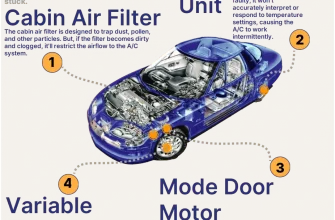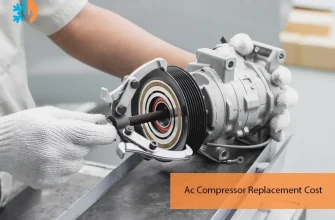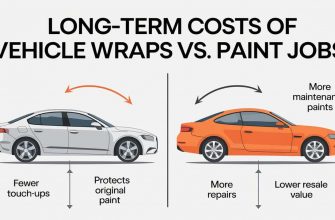When it comes to choosing a truck, one of the most critical factors to consider is the bed width. The bed is not just a space for hauling cargo; it defines the truck’s utility and versatility. In this comprehensive guide, we will delve into the various aspects of truck bed widths, their significance, and how to choose the right one for your needs.
- The Basics of Truck Bed Widths
- Why Truck Bed Width Matters
- Measuring Truck Bed Width
- Choosing the Right Truck Bed Width for Your Needs
- Types of Truck Beds and Their Widths
- Understanding Payload Capacity
- Customizing Your Truck Bed
- Common Misconceptions About Truck Bed Widths
- Choosing Accessories Based on Bed Width
- Maintenance Tips for Your Truck Bed
The Basics of Truck Bed Widths
Truck beds come in various sizes and widths, each tailored to different types of hauling and utility needs. Understanding these dimensions is essential for both potential truck buyers and current owners looking to optimize their vehicle’s functionality.
- Standard Width: Most truck beds have a standard width of 60-65 inches between the wheel wells. This measurement is crucial because it determines what can fit in the bed without overhanging.
- Narrow Bed: Some trucks, especially compact models, feature narrower beds, often around 50-55 inches wide.
- Wide Bed: Full-size trucks may have beds that exceed 65 inches, providing more space for larger loads or equipment.
Why Truck Bed Width Matters
Choosing the right truck bed width can significantly impact your vehicle’s performance and utility. Here are a few reasons why it matters:
- Payload Capacity: The width of the truck bed directly affects how much weight you can safely carry. A wider bed allows for larger and heavier items, maximizing your truck’s potential.
- Accessibility: A wider bed can make loading and unloading cargo easier, especially when dealing with larger items like construction materials or recreational gear.
- Compatibility with Accessories: Many truck bed accessories, such as toolboxes, bed liners, and racks, are designed to fit specific widths. Ensuring compatibility can save you time and money.
Measuring Truck Bed Width
If you’re unsure about your truck’s bed width or need to ensure you’re selecting compatible accessories, measuring it accurately is crucial. Here’s how to do it:
- Start by opening the truck tailgate fully.
- Measure the distance between the inner edges of the wheel wells. This is often the narrowest point of the bed.
- For a more comprehensive understanding, also measure the overall width from the outer edges of the bed.
Choosing the Right Truck Bed Width for Your Needs
When selecting a truck and its bed width, consider the following factors:
- Primary Use: Determine what you will primarily use the truck for. If you’re transporting large items frequently, opt for a wider bed.
- Vehicle Size: Ensure that the truck’s overall dimensions, including bed width, match your driving needs and parking availability.
- Future Plans: If you anticipate needing to transport larger items or equipment in the future, consider a wider bed for added versatility.
Understanding truck bed widths is pivotal for maximizing your vehicle’s utility and performance. Whether you’re a contractor needing to haul heavy materials or an outdoor enthusiast looking to transport gear, the right bed width will make all the difference. By measuring accurately and considering your specific needs, you can ensure that your truck serves you well for years to come.
Types of Truck Beds and Their Widths
The width of a truck bed isn’t just a number; it varies significantly across different truck types and models. Understanding these differences can help you choose the right truck for your specific needs. Here are the main types of truck beds and their typical widths:
- Short Bed: Generally measuring between 5.5 to 6.5 feet in length, short beds often have a width of about 61 to 65 inches. They are ideal for urban settings where maneuverability is key, making them popular among city dwellers.
- Standard Bed: A standard or regular truck bed typically measures around 6.5 to 8 feet in length, with a width of about 60 to 65 inches. This size offers a good balance between cargo capacity and ease of handling.
- Long Bed: Measuring 8 feet or more, long beds boast a width similar to standard beds, but they provide significantly more cargo space. This is perfect for those who frequently transport large items, such as construction materials or bulky equipment.
- Utility Bed: Often used in commercial applications, utility beds can have varying widths depending on their design. They may include built-in toolboxes and compartments, so their widths need to accommodate both storage and cargo needs;
Understanding Payload Capacity
The payload capacity of a truck is heavily influenced by its bed width. Wider beds can often carry larger and heavier loads, but it’s essential to consider the truck’s overall design and specifications. Here’s how to decipher the relationship between bed width and payload capacity:
- Weight Distribution: A wider bed helps distribute weight more evenly, reducing the risk of overloading one side of the truck. This is particularly important when hauling items that can shift during transport.
- Accessory Integration: Wider beds allow for the installation of various accessories designed to enhance functionality, such as tie-downs and cargo management systems.
- Compatibility with Towing: If you’re planning on towing trailers or other heavy equipment, a wider bed may provide better stability and control while on the road.
Customizing Your Truck Bed
Once you understand the basic widths and their implications, you might consider customizing your truck bed to better suit your needs. Here are some popular options:
- Bed Liners: Protecting the truck bed from scratches and dents is essential, especially if you frequently haul heavy items. Bed liners can be tailored to fit any width, ensuring maximum protection.
- Tonneau Covers: These covers not only improve aerodynamics but also enhance security for your cargo. They come in various designs and can be fitted to any truck bed width.
- Toolboxes: If you rely on your truck for work, adding a toolbox can help keep your tools organized. Ensure that the toolbox fits within the width constraints of your bed without encroaching on cargo space.
Understanding truck bed widths is vital for making an informed decision about your vehicle. Whether you prioritize payload capacity, ease of access, or customization options, knowing the specifics of bed widths can significantly affect your experience as a truck owner. By considering your unique needs and the types of loads you’ll be hauling, you can select a truck that not only meets your requirements but enhances your driving experience. Remember, the perfect truck bed width is out there—it’s just waiting for you to find it!
So, equip yourself with knowledge, explore your options, and drive confidently into your next adventure!
Common Misconceptions About Truck Bed Widths
As with many automotive features, truck bed widths are often surrounded by misconceptions. Here’s a look at some common myths and the truths behind them:
- Wider is Always Better: While a wider bed can carry larger items, it can also limit maneuverability, especially in tight spaces. It’s essential to find the right balance between width and usability based on your driving environment.
- All Accessories Fit All Beds: Not all truck bed accessories are universally compatible. Ensure you check the specifications of both the accessory and your truck bed width to avoid purchasing mismatched items.
- Bed Width Doesn’t Affect Fuel Efficiency: The aerodynamics of a truck can be affected by its bed width. A wider bed can create more drag, potentially leading to decreased fuel efficiency, especially at highway speeds.
Choosing Accessories Based on Bed Width
Once you’ve settled on a truck bed width, the next step is to select the right accessories that complement your choice. Here’s a look at some popular options:
- Bed Liners: Custom-fit bed liners protect against damage from heavy loads. Ensure you choose one that fits snugly within the width of your bed for maximum protection.
- Tie-Downs and Anchors: These are crucial for securing loads during transport. Opt for adjustable tie-downs to accommodate varying widths of cargo.
- Toolboxes: A well-fitted toolbox can optimize storage without compromising cargo space. Check measurements to ensure a perfect fit within your truck bed width.
- Cargo Nets and Tarps: Ideal for securing loose items, these accessories can be adjusted to fit the width of your bed, ensuring that nothing shifts during transit.
Maintenance Tips for Your Truck Bed
Keeping your truck bed in prime condition is vital for extending its lifespan and maintaining its functionality. Here are some maintenance tips to consider:
- Regular Cleaning: Remove dirt, debris, and any corrosive materials regularly. A clean bed prevents rust and damage over time.
- Inspect for Damage: Regularly check for scratches, dents, or rust spots. Addressing these issues promptly can prevent more extensive damage down the line.
- Protective Coatings: Consider applying a protective coating if you frequently haul heavy or abrasive materials. This can help prevent wear and tear.
Ultimately, understanding truck bed widths is an essential step in ensuring your vehicle meets your specific needs. By recognizing the various widths available, measuring accurately, and selecting appropriate accessories, you can enhance your truck’s performance and utility.
Whether you’re a weekend warrior, a tradesperson, or simply someone who enjoys the versatility of a truck, the right bed width tailored to your lifestyle can make all the difference. So take your time, do your research, and find the perfect fit that will serve you well for years to come.
In the end, it’s not just about having a truck; it’s about having the right truck for your adventures, your work, and your life.









The section on measuring truck bed width was particularly helpful. I never knew how to properly measure before reading this. Thanks for the detailed explanation!
Excellent article! The information about compatibility with accessories is something many overlook, but it’s so important. This guide is a must-read for any truck buyer.
What a comprehensive guide! I love how you outlined the practical implications of different bed widths. This will definitely help me in my decision-making process!
This article provides a fantastic overview of truck bed widths! It’s clear and informative, making it easy for anyone to understand the importance of choosing the right size for their needs.
I appreciate how this article highlights the significance of bed width in relation to payload capacity. It really opened my eyes to what I should consider when buying a truck.
I found this guide incredibly useful! The breakdown of standard, narrow, and wide beds helped me decide what I need for my next truck purchase. Great job!